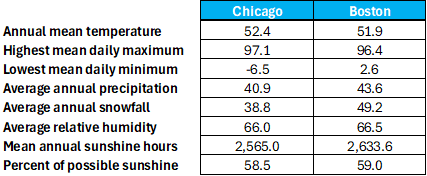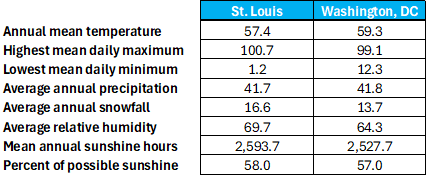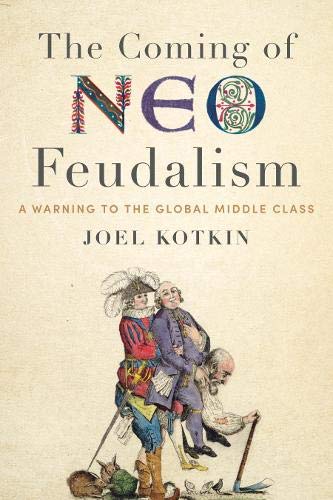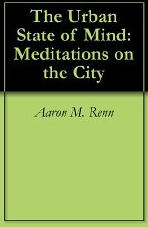
Every so often I see that someone makes the claim that people are leaving the Midwest because the weather sucks. That claim is bogus.
X poster Hunter (@StatisticUrban) made this claim in a tweet sent Monday:
“Nobody wants to hear this but one of the reasons the midwest is struggling is that the weather just sucks.
It's freezing cold, dark, and snowy in the winter, and hot and humid in the summer. The truly "nice" parts of the year are limited to a few weeks in the spring/fall.”
One parenthetic note, here: the OP’s location on X is given as the United Kingdom. Assuming they are from London, perhaps the best climate in an otherwise climate-challenged nation, I find it odd that someone from a place so cloudy, misty and perpetually cool would make this point. Nonetheless, London’s weather has not kept it from becoming one of the world’s premier global cities.
Let me say I don’t completely disagree with this person. The Midwest’s weather is not, uh, optimal. There are better places climate-wise. And that’s fine. However, it’s not the principal reason people leave the Midwest.
I’ve always maintained that there’s little difference in climate between Midwestern and Northeastern cities. I looked at climate data listed on the Wikipedia page of several cities, and here’s what I found. A quick one-on-one comparison between cities at similar latitudes makes the point. Here in this data comparison of the climates of Boston and Chicago, they’re essentially the same:

The climates of New York City and Indianapolis? The same:

Guess what? Comparing Washington, DC and St. Louis, they’re the same:

In every comparison, there’s virtually no difference in annual precipitation, annual snowfall, record high and record low temperatures, average annual relative humidity, or the amount of annual sunlight and cloudiness. Midwestern cities have slightly higher maximum temperatures and slightly lower minimum temperatures, due to their inland locations. Otherwise, at similar latitudes, the cities are quite comparable.
Read the rest of this piece at The Corner Side Yard.
Pete Saunders is a writer and researcher whose work focuses on urbanism and public policy. Pete has been the editor/publisher of the Corner Side Yard, an urbanist blog, since 2012. Pete is also an urban affairs contributor to Forbes Magazine's online platform. Pete's writings have been published widely in traditional and internet media outlets, including the feature article in the December 2018 issue of Planning Magazine. Pete has more than twenty years' experience in planning, economic development, and community development, with stops in the public, private and non-profit sectors. He lives in Chicago.
Photo source: Snow on Boston Common Flickr, under CC 2.0 License.












